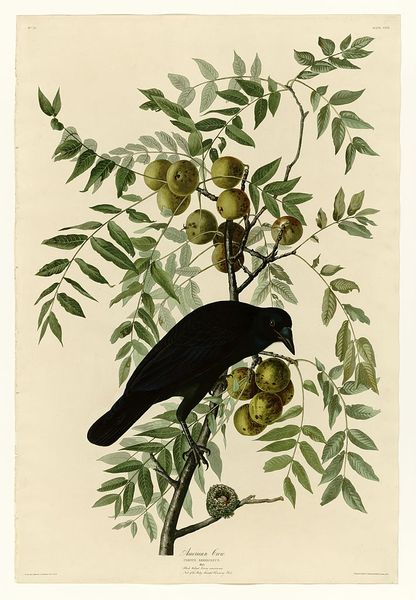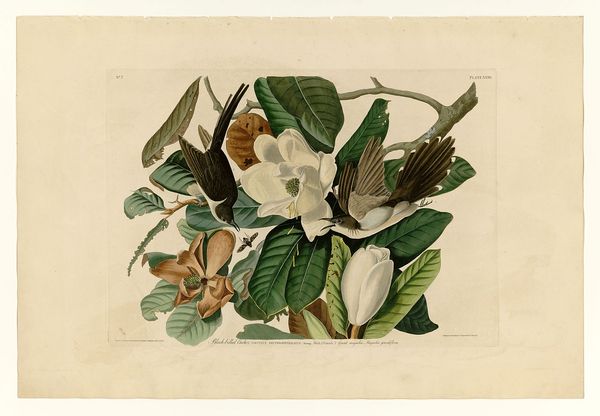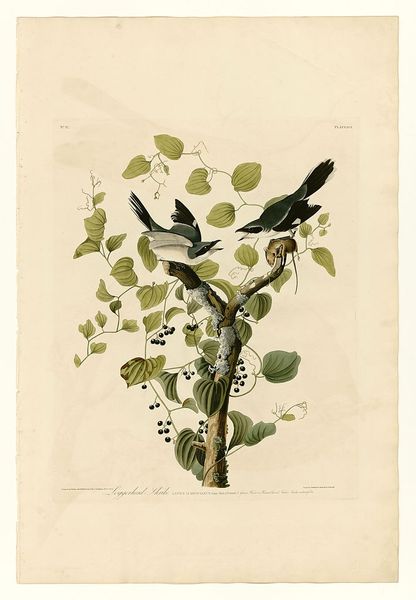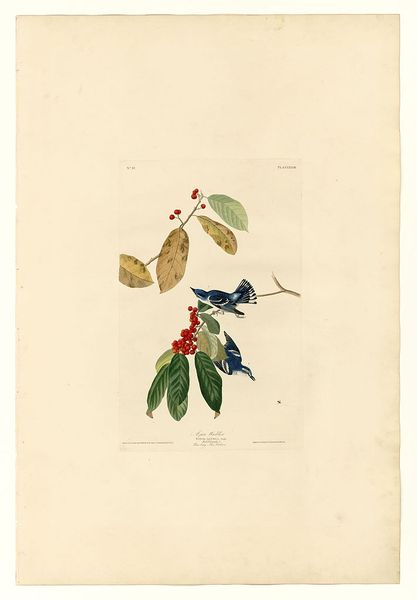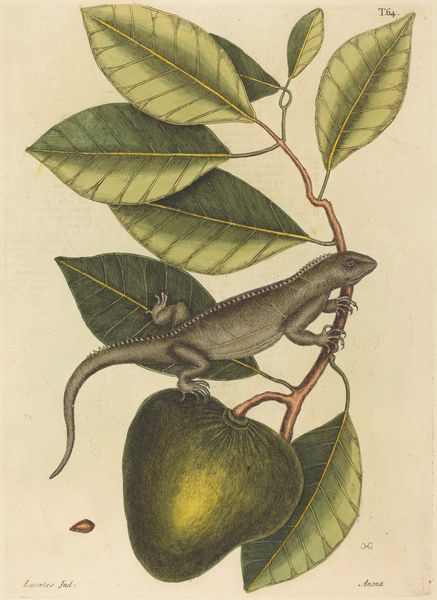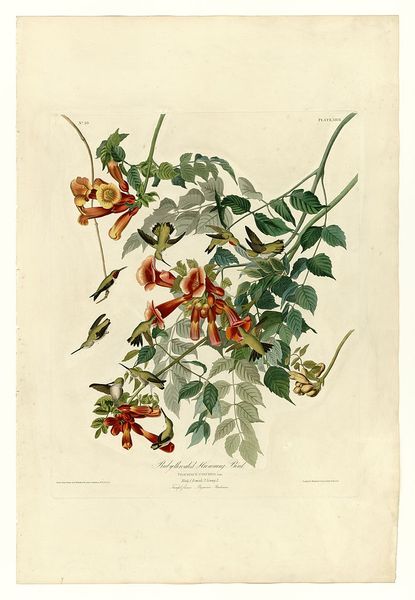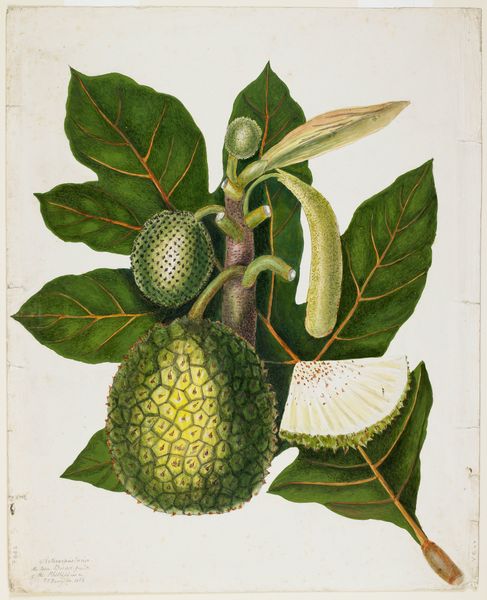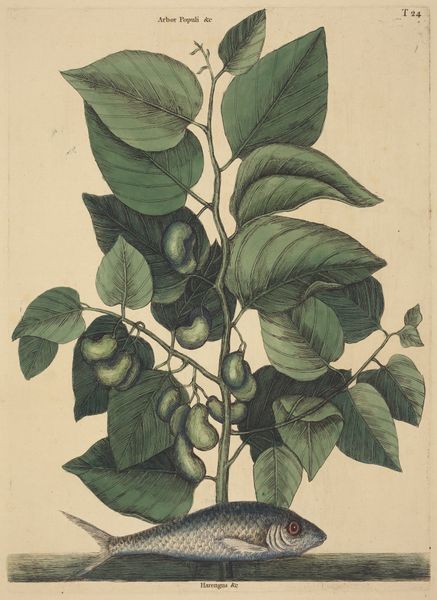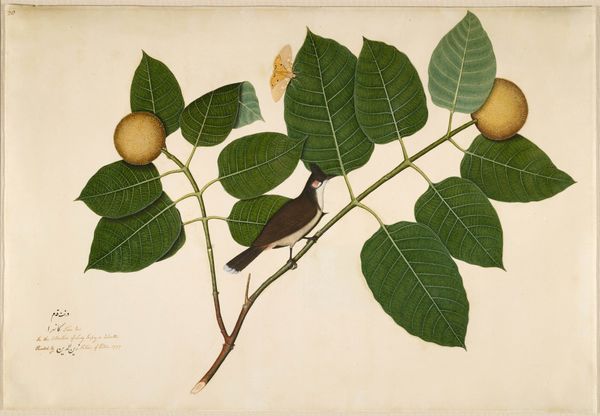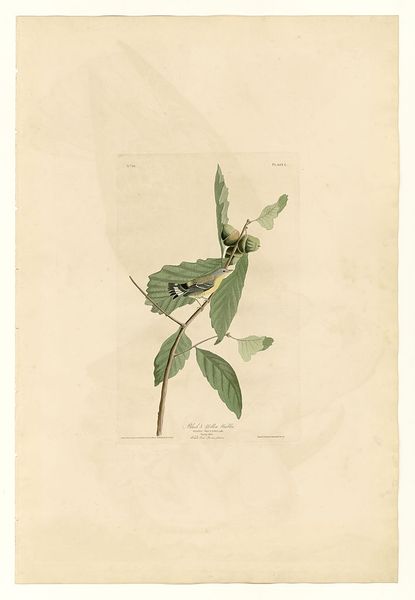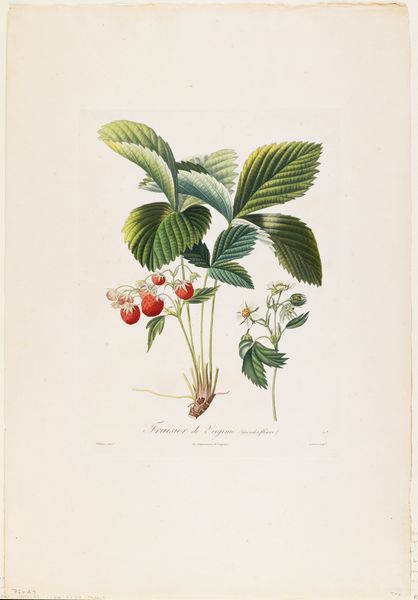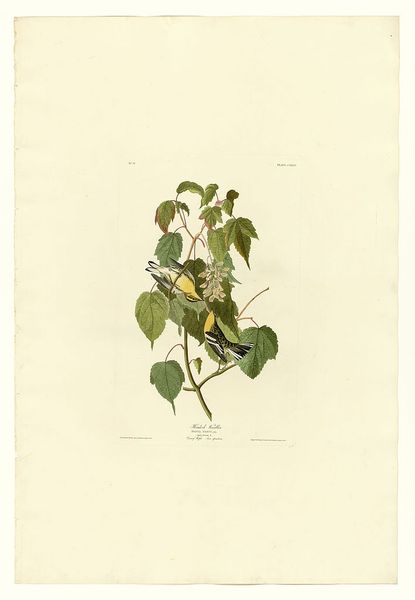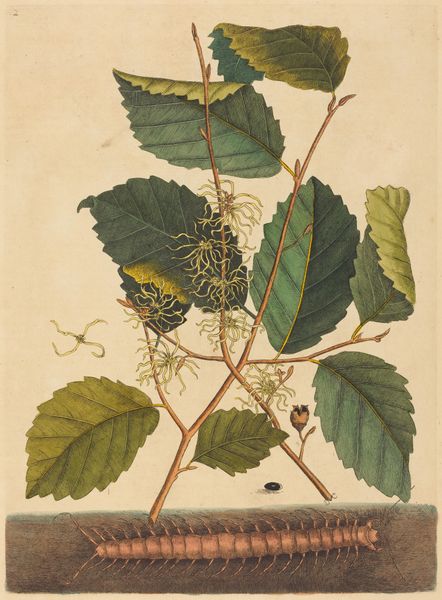
drawing, painting, plein-air, paper, watercolor
#
tree
#
drawing
#
painting
#
plein-air
#
landscape
#
flower
#
leaf
#
figuration
#
paper
#
watercolor
#
plant
#
botanical photography
#
botanical drawing
#
watercolour illustration
#
botanical art
#
watercolor
#
realism
Copyright: Public domain
Curator: This watercolor and drawing on paper features two Yellow-billed Cuckoos. John James Audubon rendered them with exquisite detail in this piece titled "Plate 2. Yellow-billed Cuckoo." Editor: Right away, I feel like I'm stepping into an old natural history book, the kind that smells faintly of dried leaves and adventure. It's captivating; the birds are bursting with life against the calm, illustrative backdrop. Curator: Absolutely. Audubon was deeply interested in capturing the vitality of birds in their natural habitats, reflecting the burgeoning field of ornithology during his time. He wasn't simply documenting; he aimed to depict a narrative of life. Editor: A little avian drama, wouldn't you say? There's a real tension, an almost operatic quality. One's taking flight as if startled, while the other has what looks like a moth clutched firmly in its beak. Dinner is served, and anxiety looms for anyone nearby, apparently. Curator: Exactly. Audubon's depictions are more than scientific; they illustrate ecological relationships—the dynamic interplay between predator and prey. The setting also situates the birds within a particular environment, hinting at broader ecological systems and anxieties about vanishing nature. Editor: It is interesting to me how hyper-detailed the birds are—almost photographic—compared to the more stylized foliage. Look at how the leaves almost mimic patterned wallpaper with how meticulously uniform their patterns are rendered. It brings this quality that’s strangely both believable and staged. Curator: I see your point. This kind of contrast may emphasize the dramatic framing. How Audubon chooses to spotlight his subjects. The botanical elements are a crucial component as well as their location, as the birds and environment inform our broader understanding of a distinct region of American ornithology. Editor: Makes you think about how much we, as viewers, impose stories and meanings onto what we see. It really reminds me of a kind of wildlife photography, but one still mediated by the artist's vision and intent to document the environment through art, not necessarily truth. Curator: Indeed. Audubon was producing images for a public hungry for depictions of the American wilderness and all that was being gained or lost in that expansion. He plays an important part in visualizing American scientific identity. Editor: A snapshot, then, of a world that feels both intensely alive and on the brink of some big change. I might leave this looking over my own backyard to see if my place in it feels any different, changed, or the same.
Comments
No comments
Be the first to comment and join the conversation on the ultimate creative platform.
